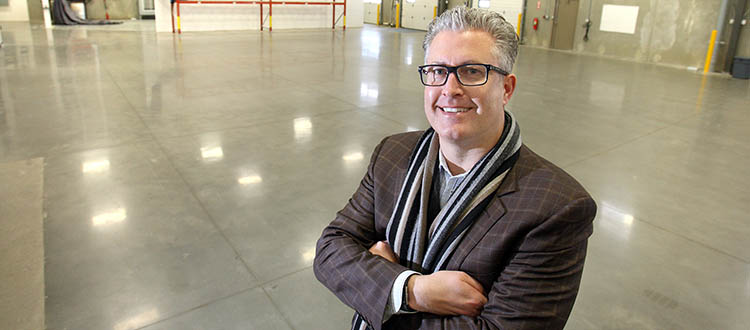
Jan. 19, 2017 | CREBNow
Poised for growth
Calgary's industrial market shows signs of turning the cornerWhile Calgary's downtown office sector and its plunging vacancy rates overshadowed all commercial real estate activity in 2016, the city's industrial market has better weathered the storm and is poised to grow in 2017, say experts.
According to Barclay Street Real Estate, vacancy for the industrial real estate sector finished 2016 at 7.76 per cent. It had peaked at 7.8 per cent in the third quarter of the year. In 2015, it was 6.57 per cent.
"Absorption was a negative 127,373 square feet for Q3. This was the only quarter of negative absorption we have had since the '90s," said Jon Mook, executive vice-president of Barclay Street Real Estate's industrial division.
"Absorption for Q4 was a positive 497,879 square feet, so we have definitely turned the corner. This positive absorption number was the result of some owner-user facilities under construction that are now complete. Absorption was positive and vacancy has now turned the corner so ...we are optimistic that vacancy will begin to come down in 2017 and the worst is behind us.''
Mook said new industrial construction in 2016 was 1.3 million square feet, compared with 3.4 million square feet in 2015.
"We expect that number to be lower in 2017," he said. "The development community can react to the market faster for industrial product than any other asset class which allows the industrial market to slow down faster when needed as is the case with the economy turns for the worse. This has enabled the industrial market to stabilize faster than other asset classes in Calgary."
Mook said a large part of Calgary's industrial real estate market caters to the distribution sector, which has not been impacted by the recession as much as other sectors that are more related to the oil and gas industry.
He attributed much of the vacancy increases since 2014 to the amount of new product built in the distribution sector.
"Everybody was building product regardless of the economic conditions and that drove vacancy up because at the end of 2014 we were at 4.3 per cent vacancy,'' said Mook.
"We believe we've peaked from a vacancy standpoint. Part of that is the developers who were building all this spec distribution product definitely put the brakes on even sort of late 2015, early 2016. That stopped a lot of new construction."
"...We are optimistic that vacancy will begin to come down in 2017 and the worst is behind us.''
Mook sees 2017 as a year of stability in the industrial real estate market with a slow decline in the vacancy rate.
Cushman & Wakefield vice-president of industrial sales and leasing Brent Johannesen said developers have been quick to react and stopped or slowed down on almost all new construction projects. Not only that, but Johannesen anticipates very little new construction is 2017.
''Space related to energy sector users has continued to come back to the market throughout 2016, but the pace appears to be slowing. Activity from logistics, warehousing and distribution continues to keep the market afloat," he said.
"The last quarter of 2016 saw some good activity and positive absorption giving some optimism as we go into 2017."
Johannesen said there was about one million square feet of negative absorption in 2016 — the worst year performance since 2009. The amount of new supply added to the market was 1.6 million square feet in 2016.
"The new buildings are slowly getting leased while the activity in the backfill space continues to lag," he said.
Tagged: absorption | Barclay Street Real Estate | Commercial | Commercial | construction | Cushman and Wakefield | Distribution Centre | Downtown | Industrial | Landlords | Tenants | Uncategorized | Vacancy Rate | YYCRE




